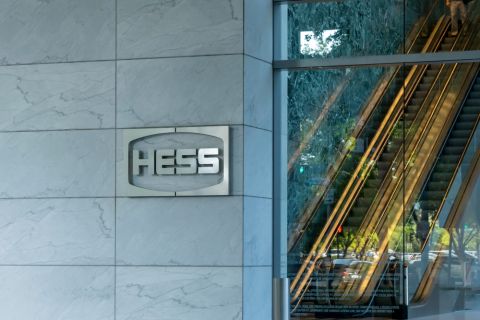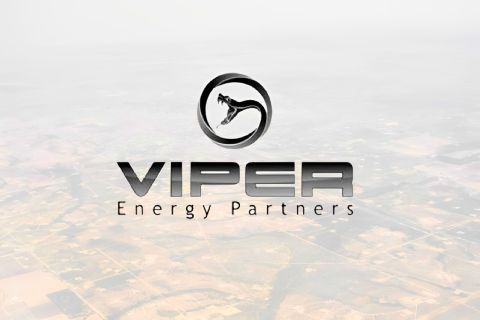Jennifer Pallanich, senior technology editor, Hart Energy: This is your Hart Energy LIVE Exclusive with Herman Artinian, president and CEO of Upwing Energy. Herman, tell me what are some of the issues that operators are facing in the industry right now.
Herman Artinian, president and CEO, Upwing Energy: More specifically with regards to production of natural gas, which is our focus, number one, all the production, about 85% of the production in the United States is done through drilling and fracking new unconventional shale assets. And it's 85% of our natural gas production. Our conventional assets, not just in the U.S. but all over the world, are depleted in their pressure, hence they’re not producing as much. And through this depletion of pressure, there is what we call liquid loading, which is all the condensates put a back pressure on the well, so they’re not able to produce.
What we were able to do is provide a little bit of boost that these assets need from the reservoir side. So by taking the compressor, lowering it as low as, as close as we can to the reservoir, we are able to draw down on the reservoir and boost that gas and continue to produce. So basically, we could bring a conventional well, whether it’s producing or not producing, bring it back into rejuvenated as if it was producing 10 years ago. And that’s what we’re able to do. So all these assets that are barely producing or have then been producing for some time, they’re able to come back into production.
JP: Okay. All right. And so that’s the subsurface compression-
HA: Subsurface compressor system.
JP: Compressor system.
HA: Absolutely. Yeah.
JP: Okay. What else can you tell me about that system?
HA: The compressor is very unique. It doesn’t exist anywhere else. So it took us about eight years to be able to put this system together and test it out. The application doesn’t exist, so there’s no such thing as enhanced natural gas recovery today till now. So we were able to shrink this very large compressor system, the size of a conference table if you will, into a five-inches diameter and 12-[feet] long tool that we deploy as close as we could get to the purse, or the reservoir, to be able to suck up that gas that’s not coming to the surface naturally, boost it up through the compressor and shoot it up to the surface. So that’s quite unique within itself. It has been quite challenging as well.
JP: Okay. And are there other ways that Upwing is responding to the challenges that operators are facing with producing natural gas?
HA: Yeah, so I think everywhere, every industry, what we’re facing is a shortage of resources in the field. So it’s no different in the oil and gas as well. So that’s how we decided instead of selling a tool for the operator to figure out and use and struggle with, which is what happens with new technology, most of the time we decided to put our arms around the application itself, hence our end-to-end service model.
So from the beginning to the end, we’re responsible. It’s a single party that we come in, we evaluate the wells, we measure the wells, we analyze the wells, we do certain completions and we’re responsible for deployment and startup of the wells. So from the client perspective, they don’t have to deal with any capital costs, number one, and number two, they don’t have to assign significant resources. We’re the single party to point the finger at, and we’re here to be able to do the job. And for that it’s just the incremental monthly service fees. So if we’re not able to get the job done right, then we don’t get paid.
JP: Earlier this year, you announced advances to your enhanced production simulator. What is it and why is it important for operators?
HA: So our enhanced simulator, really what it does is it removes the decisions that need to be done by humans and automates everything. So this system is quite important simply because it’s monitoring real time, what’s happening in the reservoir, in the wellbore, the compressor, as well as the top side because there are constant changes taking place on the top side, and it monitors it continuously and in real time makes adjustment to the compressor, and it has all the fail-safe shutdown systems in there.
So a well could go on production, a valve could be shut, a pipe could burst. So a variety of things that take place in a normal operation, and this system automatically takes care of it, shuts it down, it slows it up, it speeds it up, so it’s constantly working to optimize it as well as make sure it’s operating in a safe environment. So it really removes the human touch and human error associated with the operating system.
JP: And when we talked about this technology earlier, you mentioned an AI component to it.
HA: So we’re adding an AI component to it. Since this application really didn’t exist, it’s the first of its kind of enhanced natural gas production. We are learning, and from the ramp ups that we see, from the demand that we see from the client side, that ramp up is going to be quite fast. And for that we want to implement and we’ve been working on it so we could learn with each installation, with each operation, how we could optimize the system better for the next installation. And it’s a lot faster learning process and optimization through AI than manually to be able to do that while we’re trying to meet demands.
JP: Okay. And so the compression technology that you talked about and this modeling simulation product that we’ve talked about, are they being used only in unconventional plays, or is there the opportunity to use them offshore as well?
HA: So currently we are focusing on conventionals. We have done a lot of trials in unconventionals, but we have our models that are really optimized for conventional spaces. And on the conventional space we’re leaving about 40%, 50% of the gas down there. So we are not able to produce them. So there’s significant reserves that we’re leaving behind that we could bring up. And in parallel, we are qualifying the product for offshore. So it’s very unusual to start qualifying for offshore before you have a five, 10 year of successful onshore commercialization. But in this case, the value proposition is very strong and our technologies are well-grounded where it’s utilized in many other different places where we just did a system integration here that everyone has the comfort and the confidence to be able to qualify this. So hopefully within a year it’ll be a qualified for offshore product. Yes, we’re looking forward to that.
JP: Excellent. Thank you so much. So what is Upwing working on right now that we might be hearing about soon?
HA: We're just ramping into commercialization. With that comes for next year, a brand new facility for us to produce a lot of installations outside of United States. We’re looking at South America, Middle East and Europe. And hopefully with the offshore qualification we will start installing the units for offshore as well. So we’re very busy. Lots going on.
JP: You talked about some of the difficulties that operators are facing when it comes to producing natural gas. Can you tell me a little bit more about just the overall value of natural gas in the energy mix?
HA: Natural gas is a lot more than electrons or making power. So one-third of natural gas is used for power generation. The other two-thirds are excessively used for agriculture, for fertilizer, a lot of ethylene plastic products all the way from your car’s dashboard to wind turbines, blades to solar panels, arrays. So it has significantly more uses than what everyone thinks of natural gas being equal to making power of power generation. So its place is currently irreplaceable and it is the cleanest fossil fuel there is. And we could do a lot more to clean it up. Definitely. We’ve done a lot of work in natural gas replacing coal, which is the right step, but there’s so much more we could do to make it a very environmentally sustainable fuel. And that’s one of the things that we’re taking the leadership on.
JP: Thank you for that, and thank you for your time. And that is your Hart Energy LIVE Exclusive with Upwing Energy. To learn more, go to hartenergy.com.
Recommended Reading
FTC Oks Chevron-Hess Deal, Bans John Hess from Board
2024-09-30 - Federal regulators signed off on a blockbuster tie-up between Chevron and Hess Corp. but banned CEO John Hess from sitting on the Chevron board.
Despite Low Prices, Thrifty, Efficient E&Ps Keep Distributions Flowing
2024-10-08 - Even with lower commodity prices, producers have maintained healthy shareholder returns through dividends and buybacks thanks to M&A, drilling efficiencies and capital discipline.
Diamondback’s Viper Buys $1.1B in Permian Mineral, Royalty Interests
2024-09-11 - Diamondback subsidiary Viper Energy is spending $1.1 billion on a series of Permian Basin mineral and royalty acquisitions from Tumbleweed Royalty, which was formed by the executives behind Double Eagle Energy.
Vivakor to Acquire Endeavor Crude Transport Cos. for $120MM
2024-09-25 - Vivakor said it is buying Endeavor Crude and related companies, which have a series of long-term strategic partnerships with customers in the Permian Basin, Eagle Ford Shale and the STACK play.
Vivakor Closes Acquisition of Permian, Eagle Ford Crude Logistics
2024-10-08 - Vivakor purchased Endeavor Crude and related companies, which have a series of long-term strategic partnerships with customers in the Permian Basin, Eagle Ford Shale and Oklahoma’s STACK play.
Comments
Add new comment
This conversation is moderated according to Hart Energy community rules. Please read the rules before joining the discussion. If you’re experiencing any technical problems, please contact our customer care team.






